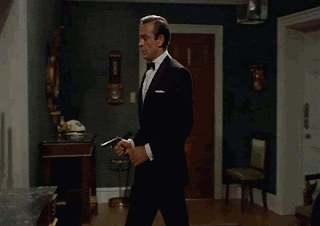☆☆☆☆☆ Winning Audition
Directed by Judd Apatow.
Starring Seth Rogen and Katherine Heigel.
Knocked Up Audition clip shows the wonderful chemistry and comedic timing of Seth and Katherine.
I love the pacing that both actors are using. Seth stays calm and reasonable during his pauses which make Katherine's dialogue even funnier. I love the way Katherine whispers, and mouths, "Get out of the car" to Seth as he is hesitant to leave. The scene is so well done that Judd could have digitally put this audition scene in the movie.
I enjoy how each actor briefly glances at the script when they feel a need. They never break character nor distract when they steal a glance at the script on their laps. Seth plays the straight man to Katherine's comedy. Wonderful how Katherine actually convinces Seth to finally leave at the end of the scene. I really felt Heigel had finally convinced Rogen to leave the car. Enjoy!
Directed by Judd Apatow.
Starring Seth Rogen and Katherine Heigel.
Knocked Up Audition clip shows the wonderful chemistry and comedic timing of Seth and Katherine.
I love the pacing that both actors are using. Seth stays calm and reasonable during his pauses which make Katherine's dialogue even funnier. I love the way Katherine whispers, and mouths, "Get out of the car" to Seth as he is hesitant to leave. The scene is so well done that Judd could have digitally put this audition scene in the movie.
I enjoy how each actor briefly glances at the script when they feel a need. They never break character nor distract when they steal a glance at the script on their laps. Seth plays the straight man to Katherine's comedy. Wonderful how Katherine actually convinces Seth to finally leave at the end of the scene. I really felt Heigel had finally convinced Rogen to leave the car. Enjoy!
Trivia - Anne Hathaway was originally cast in the part Heigel won due to "creative differences" with the director, Judd Apatow. Anne was against using real footage of a child being born. In the end Judd could not get a child work permit for the new born, so no real birth footage was used in the final film.












+Acting+Madness.gif)




